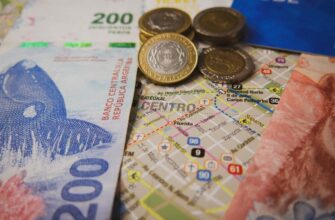- Why Crypto Security Starts with Your Wallet Password
- Understanding Crypto Wallets: Your Digital Vault
- Why Passwords Are Non-Negotiable for Beginners
- Step-by-Step: Creating Your Password-Protected Wallet
- Password Management: Beyond the Basics
- Critical Mistakes Beginners Must Avoid
- FAQ: Password-Protected Wallet Essentials
- Can I recover funds if I forget my wallet password?
- Are password managers safe for crypto wallets?
- Should I write down my wallet password?
- How often should I change my crypto wallet password?
Why Crypto Security Starts with Your Wallet Password
As cryptocurrency adoption surges, protecting your digital assets becomes non-negotiable. For beginners, setting up a secure crypto wallet with password protection is the foundational step to safeguarding investments. Unlike traditional banks, crypto transactions are irreversible – once funds leave your wallet, there’s no fraud department to call. This guide demystifies wallet security, focusing on password best practices tailored for newcomers navigating the crypto space.
Understanding Crypto Wallets: Your Digital Vault
A cryptocurrency wallet doesn’t actually “store” coins like a physical wallet. Instead, it securely manages two critical elements:
- Private Keys: Digital signatures proving ownership of your crypto assets
- Public Addresses: Shareable locations for receiving funds
Password protection encrypts these keys, acting as the first barrier against unauthorized access. Most beginners start with software wallets (like Exodus or MetaMask) which balance convenience and security through password-enabled encryption.
Why Passwords Are Non-Negotiable for Beginners
New users face unique vulnerabilities:
- Phishing scams targeting inexperienced investors
- Malware designed to steal wallet credentials
- Accidental exposure through unsecured devices
A robust password transforms your wallet into a digital fortress. Without it, anyone accessing your device could drain your assets instantly. Remember: Blockchain transactions cannot be reversed, making prevention essential.
Step-by-Step: Creating Your Password-Protected Wallet
Follow this foolproof process to establish maximum security:
- Choose a Reputable Wallet: Opt for established options like Trust Wallet or Coinbase Wallet with proven security features
- Download from Official Sources: Only use app stores or developer websites – avoid third-party links
- Create Your Master Password:
- Use 12+ characters mixing uppercase, numbers, and symbols
- Avoid personal information (birthdays, pet names)
- Consider passphrases: “BlueDragon$Eats42Tacos!”
- Backup Your Recovery Phrase: Write the 12-24 word seed phrase on paper – never digitally
- Enable 2FA: Add biometrics or authenticator apps for login attempts
- Test with Small Funds: Send minimal crypto to verify functionality before major deposits
Password Management: Beyond the Basics
Your password strategy needs ongoing maintenance:
- Uniqueness is Key: Never reuse passwords from other accounts
- Password Managers: Tools like Bitwarden generate/store complex passwords securely
- Regular Updates: Change passwords every 3-6 months
- Zero Sharing Policy: Legitimate services will NEVER ask for your password
Critical Mistakes Beginners Must Avoid
Steer clear of these security pitfalls:
- Using weak passwords like “123456” or “password”
- Storing recovery phrases on cloud services or photos
- Ignoring wallet software updates with security patches
- Entering passwords on public Wi-Fi networks
- Assuming exchanges replace wallet security (they don’t!)
FAQ: Password-Protected Wallet Essentials
Can I recover funds if I forget my wallet password?
Yes, but ONLY with your recovery phrase. This underscores why physically safeguarding those 12-24 words is crucial – without them, lost passwords mean permanently lost crypto.
Are password managers safe for crypto wallets?
Reputable password managers (like 1Password) use military-grade encryption and are significantly safer than reusing weak passwords. Ensure you protect your master password with 2FA.
Should I write down my wallet password?
Never store passwords and recovery phrases together. If you must write a password, keep it separate from seed phrases in a secure location like a fireproof safe.
How often should I change my crypto wallet password?
Every 3-6 months, or immediately after any security incident. Regular changes limit exposure if credentials are compromised without your knowledge.
Implementing these password protocols transforms your crypto journey from vulnerable to vigilant. Remember: In the decentralized world, you are your own bank – and a secure password is your first security guard.








